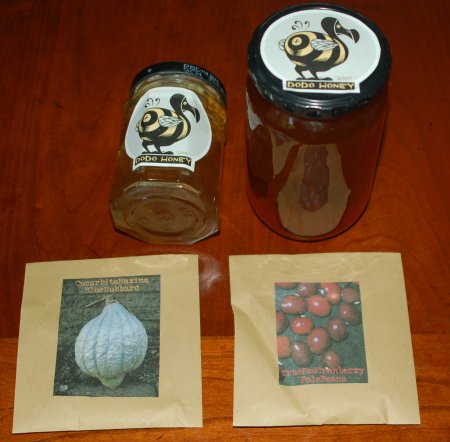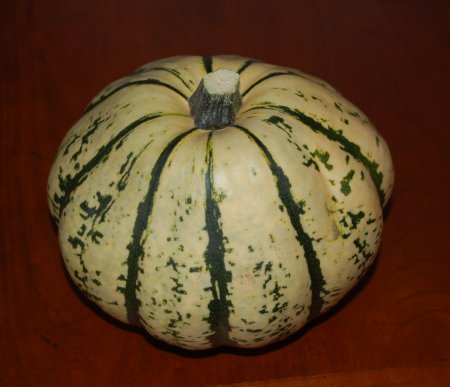Many gardeners, experienced or beginners, have in the back of their mind they would like to save their own seeds. Perhaps you have even tried it before, but were frustrated or lost interest. One of the most common reasons for failure is not starting with the right seeds. In this post, I’m going to explain how to get the right seeds. This post is mostly about vegetable seeds, but many of the basic principles can be applied to other plants as well.
Other Seed Saving Gardeners
One of the best sources for seeds suitable for seed saving is other gardeners who save their own seeds. I’m not talking about someone who buys a packet of seeds, plants half, then gives you the rest. I’m talking specifically about gardeners who are experienced in saving their own seeds.
You can sometimes find these gardeners in the context of seed exchanges, perhaps fellow community gardeners if you have a community (allotment) garden. There are of course other blogs like this one with people behind them that save their own seeds.
By it’s nature, saving seeds usually means having a lot of extras on hand. You shouldn’t be afraid to approach people who save their own seeds and ask for some, they will probably be happy to give them to you. Of course you should be prepared to pay shipping costs and/or a small handling fee, and offer something in trade if you have it. Most people who save seeds will have plenty of extras to spare, and may not even have space in their garden to accept any seeds from you in return.
Everyone understands that when you are new to seed saving, you need some seeds to get started, and won’t have anything to offer immediately in return.
If you know you are growing seeds that have been grown and saved by another gardener experienced in this, and you trust they have probably done it right, then you know you are growing seeds suitable for further saving.
The Difference Between Hybrid and Open Pollinated (OP) Seeds
If you aren’t lucky enough to know another seed saving gardener, then you will need to buy some, and this can be very tricky.
The bottom line is that in order to save seeds that can be grown into plants identical to the parent plants, you must have OP seeds. Most common vegetable seeds are F1 hybrids, and seeds saved from these plants may be sterile and in any case won’t produce plants the same as the parents. Commercial F1 hybrid seeds are not made in the same way as normal OP seeds, but rather are made in special laboratories or factories.
Seed companies depend on people buying their seeds every year. If everyone saved their own seeds and traded with each other, there wouldn’t be any profit in selling seeds. One of the most important reasons why commercial F1 hybrid seeds were developed was to make it impossible for people to save their own seeds.
Choosing the Right Seed Company
Many gardeners are very attached to their seed companies. Because they buy seeds every year, they want high quality seeds and good customer service. Many of these same gardeners when they starting thinking about buying seeds for the purpose of saving their own seeds, are very strongly inclined to look for OP seeds from their present favorite seed companies. This is almost never possible to do.
Since the entire business model of most seed companies depends on you returning every year in order to buy more seeds, they would go out of business if customers saved and traded their seeds, and one of their most important goals is to frustrate any attempt at seed saving. While most seed companies sell some OP seeds, anytime you try to buy seeds for seed saving from a standard seed company you will be faced with very aggressive marketing intended to convince you to buy F1 hybrid seeds instead.
One of the first things you may notice when looking for OP seeds is they aren’t labeled as such. You may find occasional seeds labeled as an F1 hybrid, but none clearly labeled as OP. There’s a very important reason for this. Most contracts between the seed manufacturers and seed retailers forbid the labeling of OP seeds. Instead the seed manufactures want you to have to guess which ones are OP based on the written descriptions or expect you to incorrectly assume all seeds not labeled as hybrid must be OP. Many of the written descriptions are very misleading in this way, and sometimes F1 hybrid seeds are given the same or a very similar name to an heirloom variety. In this way, many would be seed savers buy hybrid seeds by mistake and waste their time trying to save seeds from the plants.
Many smaller seed companies are run by very honest people with good intentions, but because they resell seeds from other less honest companies, they find themselves having to follow the rules laid out by their suppliers.
Of course if you don’t know if a particular variety of seed is suitable for seed saving, you can call or email the seed company and ask them. But give this some thought. Suppose the person answering the question doesn’t understand the difference between OP and hybrid, and assumes you can save seeds from any plant. How are you going to know this? How are you going to know the person telling you a seed is suitable for saving is really telling you the truth and knows what they are talking about? Maybe after you’ve wasted your time trying to save seeds from an F1 hybrid you can complain about it, but all you are going to get is your purchase price refunded or get a new packet of seeds. Do you care if you get your money back for a packet of seeds or a free packet of seeds?
There have been cases of seeds that were labeled as OP turning out to be hybrids. If this happens, again, all that you can hope to do is get your money back.
Remember too that if you incorrectly try to save seeds from an F1 hybrid plant, you may not know this for two or more years after you buy the seeds. This amount of time makes it all that much harder for you to go back to where you bought them and expect good customer service.
If you try to buy OP seeds from a normal seed company, you might succeed in the end, but you are really going to punish yourself in the process.
The only way to make sure you are getting OP seeds is to buy them from a company that has a clear public policy of only selling OP or non-hybrid seeds! You will see this policy stated in the seed catalog or website. These companies are proud of the fact they sell these seeds, and will not try to hide it from you. Many state it clearly on their front page.
For example, look at the policy and front pages of the following seed companies:
Baker Creek (bottom of page)
Another Resource for Finding OP seeds
The Seed Savers Exchange in the US tracks OP seeds sold by commercial seed companies in North America, and publishes some statistics and variety names in a book called the Garden Seed Inventory. This book is a very useful aid in determining what seeds sold by standard seed companies are OP.
Obtaining OP Seeds Internationally
One of the problems many seed savers have is OP seeds are all but unavailable locally. Many countries have laws that forbid the sale of many or all OP seeds, for example the European Seed Laws. North America is one of the last places in the world where the free sale of OP seeds is allowed. There is an added benefit to getting seeds from North America in that, because of the history of the area with all of it’s migrants coming from all over the world and bringing many seeds with them, the choice of heirloom seeds there is very large. The favorable exchange rate with the US dollar and many other currencies makes it also an inexpensive place to buy seeds at the moment.
Many people incorrectly assume buying or sending vegetable seeds internationally is not allowed. In fact, in spite of it’s reputation as being something difficult to do, most countries allow it. In fact few diseases are carried by vegetable seeds that are not already present worldwide, so there is not really a reason for most countries not to allow their import.
I have not personally tried but my understanding is even countries like Australia and New Zealand, that have reputations as being very difficult places to even transport plants internally, don’t have a problem with vegetable seeds. These countries forbid the import of invasive species, and require all seeds be labeled with their Latin name, so they can be compared with their invasive species list.
Until this past year the US formally did not allow the import of vegetable seeds, but in reality they were almost always cleared by customs. Many other countries continue to have policies like this. This last year the rules for the US changed and now the import of most vegetable seeds is formally allowed by individuals, but a permit must be obtained in advance by someone who is a US resident. As far as I’m aware, sending vegetable seeds to Canada is not a problem.
Most countries forbid the import of seeds associated with major commercial domestic crops. For example you cannot import corn into the US, potatoes into Europe and so on. Also many countries forbid the import of live plant material, scions, bulbs and tubers.
Your chance of getting seeds through customs in any country will increase if you put the seeds in a clear plastic zip lock bag, limit the number of seeds to about 50 per bag and label it with the Latin as well as the common name.



